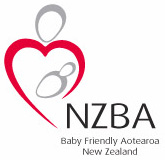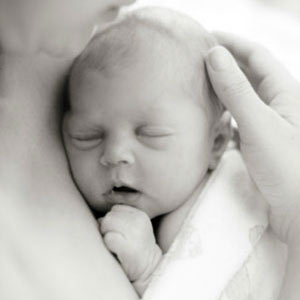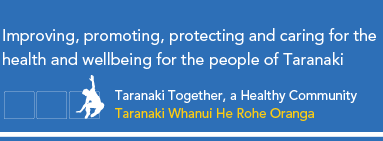 Baby Friendly
Baby Friendly
Baby Friendly Hospital Initiative
Taranaki Base and Hāwera hospitals are accredited as Baby Friendly Hospitals - hospitals working within the World Health Organisation's recommended 10 Steps to Successful Breastfeeding.
The Baby Friendly Hospital Initiative was launched in 1991 by the World Health Organisation and the United Nations Children's Fund to assist all hospitals to become centres of breastfeeding support.
Breastfeeding lays a foundation for a good health in infancy, childhood and into adult life. Maternity hospitals have a special role in supporting the establishment of breastfeeding.
The Baby Friendly Hospital Initiative (BFHI) assists all maternity hospitals to become centres of breastfeeding support. BFHI is a World Health Organization and United Nations Children's Fund initiative.
BFHI has been adopted in many countries around the world. Where hospitals have been designated as baby friendly, the standard of care for all mothers and babies has been raised, more mothers are breastfeeding their babies and child health has improved as a result.
Staff at baby friendly hospitals provide assistance to breastfeeding mothers by adopting practices that protect, promote and support breastfeeding.
Staff also ensure that mothers who decide not to breastfeed are provided with information and support.
A baby friendly hospital adopts the Ten Steps to Successful Breastfeeding (see below), whilst providing good care before, during and after birth, treating every mother with respect, and supporting her with factual information.
A baby friendly hospital also agrees not to accept free or low-cost breast milk substitutes (baby formula), feeding bottles or teats.
New Zealand maternity hospitals are encouraged to become baby friendly. The New Zealand Breastfeeding Authority is responsible for implementing BFHI throughout New Zealand and for awarding certificates of accreditation.
 The 10 steps to Successful Breastfeeding are:
The 10 steps to Successful Breastfeeding are:
Every maternity facility providing services and care for newborn infants should:
- Have a written breastfeeding policy that is routinely communicated to all health care staff.
- Train all health care staff in the skills necessary to implement this policy.
- Inform all pregnant women about the benefits and management of breastfeeding.
- Help mothers initiate breastfeeding within a half-hour of birth. Place babies in skin to skin contact with their mothers following birth for at least an hour. Encourage mothers to recognise when their babies are ready to breastfeed, offering help if needed.
- Show mothers how to breastfeed and how to maintain lactation even if they are separated from their infants.
- Give newborn infants no food or drink other than breast milk unless medically indicated.
- Practise rooming-in - allow mothers and infants to stay together - 24 hours a day.
- Encourage breastfeeding on demand.
- Give no artificial teats or pacifiers (also called dummies and soothers) to breastfeeding infants.
- Foster the establishment of breastfeeding support groups and refer mothers to them on discharge from hospital or clinic.
NGĀ KŌRERO WHAKAMARAMA
Ngā Arawhata Tekau mō te Ūkaipō
- Me whai kaupapa here mō te ūkaipō, mō ngā kai mahi Hauora.
- Me whakapakari i ngā kai mahi hauora i ngā pūkenga, kia whakatinanahia e rātou te kaupapa.
- Pānuitia ki ngā wāhine hapū ngā painga o te ūkaipō, me te whakahaere hoki i taua kaupapa.
- Āwhinatia ngā whaene ki te ūkaipō ā rātou pēpi, i roto i te haurua hāora muri tata mai i te whānautanga.I muri tata tonu mai ote whanautanga waihotia pepi kiri ki te kiri ki tona Whaea Te iti rawa hauora kia whakahauhautia nga Whaea kia mohio Te wa pai ki te ukaipo nga pepi, Mehema Hoatu to Awhina.
- Tohutohu ki ngā whaene, ki te ūkaipō ā rātou pēpi, me pēhea hoki ka mau tonu te rere o te waiū, ahakoa wehe rātou i a rātou pēpi.
- Tohutohu ki ngā whaene, kia kaua e whāngai ā rātou pēpi ki ētehi atu tūmomo kai, wai rānei, ko te wai ū ānake. Waiho mā te takuta te kī menā ka whāngai ērā atu kai.
- Me nohotahi te whaene me tōnā pēpi i te ruma kotahi mō te rua tekau mā whā hāora ia rangi.
- Me akiaki kia whāngai i te wā e tangi kai ana te pēpi.
- Tohutohu ki ngā whaene kia kaua e hoatu tētehi tūmomo tītī tawhaiwhai, ki ngā pēpi kai ū.
- Me whakaatu ki ngā whaene kei whea ngā roopu whakahaere ūkaipō mō te wā ka puta rātou i te hohipera.
 Skin to Skin
Skin to Skin
‘Skin to Skin’ is cuddling Baby close when mother has nothing on her top half and baby is naked or has only a nappy on.
Studies have shown that a baby who has skin contact with his / her mother / father following birth gains many advantages:
- Baby calmed and stress reduced
- Baby’s temperature is stabilised
- Increases mother’s self-confidence
- Baby seeks the breast naturally and spontaneously
- Less breastfeeding problems
- Baby recognises parents more quickly
Rooming-in
Why is rooming-in important?
- Significant increase in the successful initiation of breastfeeding
- Promotes successful breastfeeding
- More likely the baby will be exclusively breastfed
- Increases the duration of breastfeeding
- Mother learns to identify baby's cues
- Separation is stressful for both mother and baby
- Babies breastfeed more frequently
- Decreases the risk of breast engorgement
- Breastmilk supply increases earlier
- Mothers produce more milk
- Babies gain more weight
- Decreases jaundice
- Encourages bonding
- Improves the infants sleep
- Rooming-in does not make mothers more tired
- Decreases infants crying (baby will cry more if apart from mother and carers respond less to a baby crying, when baby is out of the mother's room)
- Any medical procedures will be performed in mother's presence
- Reduces the rate of infection by reducing exposure to foreign bacteria
- Reinforces (to the mother) her importance to the baby
- Baby is safer; for instance (in the rare case) of choking, fire or 'baby-snatching'
Last updated: Monday, May 16, 2016


